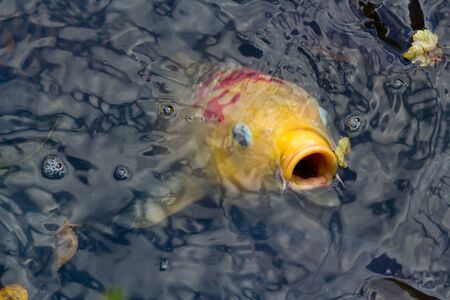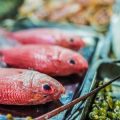Introduction to Aquarium Fish Nutrition in the UK
Ensuring optimal nutrition for aquarium fish is a cornerstone of responsible pet ownership, especially within the diverse and vibrant aquarist community found throughout the UK. The dietary needs of ornamental fish are often overlooked, yet understanding what different species require is vital for their health, longevity, and overall wellbeing. In British households, popular species such as goldfish, guppies, tetras, and angelfish each have unique nutritional profiles and feeding habits that must be catered to. When these needs are met, fish display brighter colours, increased activity, and greater resistance to common illnesses. However, failing to provide a balanced diet can lead to malnutrition, weakened immune systems, and stunted growth. With the right knowledge about essential nutrients—ranging from proteins and lipids to vitamins and minerals—aquarium enthusiasts across the UK can create thriving aquatic environments that mirror the natural habitats of their finned companions.
Key Nutrients Required for Fish Health
Ensuring the optimal health of your aquarium fish in the UK begins with understanding their dietary needs. Fish, like all animals, require a balanced intake of nutrients to thrive. Here’s a detailed breakdown of the essential nutrients and how each contributes to the wellbeing of popular aquarium species:
Proteins: Building Blocks for Growth and Repair
Proteins are fundamental for tissue growth, muscle development, and repair. Young and carnivorous fish, such as guppies and angelfish, typically need higher protein levels compared to adult or herbivorous species. A deficiency in protein can result in stunted growth, weakened immune response, and reduced vitality.
Fats: Energy Source and Cell Function
Fats (lipids) provide a concentrated energy source and play a crucial role in maintaining healthy cell membranes. They also aid in the absorption of fat-soluble vitamins. However, excessive fats can lead to obesity and organ dysfunction, so moderation is key when choosing commercial feeds or preparing homemade diets.
Vitamins: Supporting Vital Functions
Vitamins support numerous biological functions including metabolism, vision, bone formation, and immune defence. For example, vitamin C is vital for wound healing and disease resistance in many freshwater fish commonly kept in British aquariums.
Minerals: Essential for Structure and Physiology
Minerals such as calcium, phosphorus, magnesium, and potassium are required for bone structure, nerve function, and maintaining osmotic balance. Aquarium water quality in the UK may influence mineral availability; therefore, supplementing through diet or water additives is sometimes necessary.
Nutrient Requirements Table for Common UK Aquarium Species
| Nutrient | Main Functions | Common Sources |
|---|---|---|
| Protein | Growth & Tissue Repair | Fish meal, bloodworms, daphnia |
| Fat | Energy & Cell Health | Fish oils, brine shrimp |
| Vitamin C | Disease Resistance & Healing | Specialist flakes/pellets, fresh greens (for herbivores) |
| Calcium | Skeletal Strength & Nerve Function | Cuttlefish bone (for snails), mineral supplements |
| Pottasium & Magnesium | Muscle/Nerve Function & Osmoregulation | Aquarium salts, varied diet including plant matter |
By providing a well-rounded diet that meets these nutritional requirements, UK aquarists can help ensure their fish remain vibrant and healthy throughout their lives.
![]()
3. Common Aquarium Fish Species and Their Dietary Preferences
Understanding the unique dietary needs of popular aquarium fish species is vital for maintaining their health and vibrancy. In the UK, some of the most commonly kept species include goldfish, guppies, tetras, and cichlids. Each of these species has distinct nutritional requirements influenced by their natural habitats and feeding behaviours. Below is an overview that highlights the primary dietary preferences and essential nutrients needed for each:
| Species | Natural Diet | Recommended Food Types | Key Nutrients |
|---|---|---|---|
| Goldfish (Carassius auratus) | Omnivorous; plant matter, small invertebrates | High-quality flakes/pellets, blanched vegetables (peas, spinach), live/frozen foods (daphnia, bloodworms) | Protein, fibre, vitamins A & C |
| Guppy (Poecilia reticulata) | Omnivorous; algae, small insects, crustaceans | Micro-pellets/flakes, brine shrimp, spirulina-based feeds | Protein, omega-3 fatty acids, carotenoids |
| Tetra (e.g., Neon Tetra) | Omnivorous; micro-invertebrates, plant debris | Fine flakes/micro-granules, live/frozen daphnia and mosquito larvae | Amino acids, vitamins B & D |
| Cichlid (various species) | Diverse: Some are herbivores, others omnivores or carnivores | Cichlid-specific pellets/flakes, vegetable matter (courgette, spinach), occasional protein sources (krill) | Protein (varied levels), calcium, essential fatty acids |
It’s important to tailor feeding regimes according to species-specific needs to prevent nutritional deficiencies and support optimal growth. For example, goldfish thrive on a varied diet with ample fibre to aid digestion, while guppies benefit from high-quality protein sources to maintain their vivid colouration. Cichlids can have specialised diets depending on whether they are herbivorous or carnivorous—always check the requirements of your particular species. Providing a diverse and balanced diet not only enhances immunity but also encourages natural foraging behaviours and overall wellbeing in your aquarium community.
4. Types of Fish Food and Feeding Methods
Understanding the variety of fish foods available and their proper use is crucial for maintaining healthy aquarium species in the UK. Both commercial and natural food options offer unique benefits, and choosing the right one depends on the dietary needs of your fish, as well as their feeding habits.
Commercial Fish Foods: Forms and Functions
| Type of Food | Description | Best For |
|---|---|---|
| Flake Food | Lightweight, floats on water; formulated with essential nutrients | Surface-feeding species (e.g., guppies, tetras) |
| Pellets/Granules | Sinks slowly; available in floating or sinking varieties | Mid-water and bottom-dwellers (e.g., angelfish, catfish) |
| Wafers/Tablets | Dense discs; designed to sink rapidly for bottom feeders | Plecos, loaches, corydoras |
| Freeze-dried/Frozen Foods | Nutrient-rich; includes bloodworms, daphnia, brine shrimp | Carnivorous and omnivorous species needing protein boosts |
| Gel Foods | Customisable texture; often used for specific dietary needs or medicated feeds | Specialist diets or recovering fish |
Natural Food Options in the UK Context
Aquarists may also supplement commercial diets with natural foods such as live daphnia, mosquito larvae, or locally sourced aquatic plants. While these mimic the natural diet of many species and promote enrichment, it’s important to ensure all live foods are sourced from reputable UK suppliers to avoid introducing pathogens.
Safe and Effective Feeding Practices
- Portion Control: Offer only as much food as your fish will consume within two to three minutes to prevent overfeeding and water pollution.
- Variety: Rotate between different types of food to ensure a balanced intake of proteins, fats, vitamins, and minerals.
- Observation: Watch your fish during feeding. This helps you identify health issues early and adjust portions or food types accordingly.
- Feeding Frequency: Most adult tropical fish thrive on once or twice daily feeds. Juveniles may require more frequent meals.
- Treats: Use high-protein treats like bloodworms sparingly—once or twice per week is sufficient for most community tanks.
Sustainability Considerations for UK Aquarists
Select brands that use responsibly sourced ingredients. Many UK-based companies now offer eco-friendly packaging and support sustainable fishing practices, aligning with the growing environmental awareness among British aquarists.
5. Addressing Nutritional Deficiencies and Health Issues
Even with the best intentions, aquarium fish in UK homes can develop nutritional deficiencies that affect their health and vitality. Recognising early signs and understanding how to manage these issues is crucial for responsible aquarists. Below, we outline common nutritional problems, provide identification tips, and highlight practical management strategies and UK-specific resources.
Common Nutritional Problems in Aquarium Fish
| Deficiency | Species Most Affected | Typical Signs |
|---|---|---|
| Protein deficiency | Tropical species, Goldfish | Poor growth, muscle wastage, lethargy |
| Vitamin C deficiency | Cichlids, Tetras | Curved spine, swollen gills, frequent infections |
| Fatty acid deficiency | Marine species, Livebearers | Poor fin condition, dull colours |
| Calcium/phosphorus imbalance | Corydoras, Catfish | Skeletal deformities, weak bones |
Identification and Early Intervention
- Observe daily: Monitor your fish for changes in behaviour, appetite, colouration or physical appearance.
- Check feeding practices: Ensure you are offering a balanced diet appropriate for the species’ natural habits.
- Consult local experts: Aquatic shops and veterinary surgeons with fish expertise can help diagnose problems early.
Prevention Tips for UK Fishkeepers
- Diversify diets: Rotate between high-quality flakes, pellets and fresh/frozen foods such as brine shrimp or bloodworm sourced from reputable UK suppliers.
- Use species-specific feeds: Many British brands offer tailored foods for goldfish, tropicals and marine species—always check labels for essential nutrients.
- Avoid overfeeding: Follow manufacturer guidelines or consult with aquatic specialists to prevent obesity and water quality issues.
Local Resources for Support in the UK
- The Ornamental Aquatic Trade Association (OATA) provides guidance on fish health and nutrition (ornamentalfish.org).
- BVA (British Veterinary Association) lists qualified vets with experience in ornamental fish care (bva.co.uk).
- Your local aquatic retailer often collaborates with nutrition specialists and can recommend suitable products for your tank’s inhabitants.
If in doubt about your fish’s health or dietary needs, always seek advice from a professional familiar with UK regulations and environmental conditions. By staying informed and proactive, you can ensure your aquarium fish thrive year-round.
6. Sustainable and Ethical Fish Feeding
As awareness of environmental impact grows in the UK, aquarium enthusiasts are increasingly mindful of their role in promoting sustainability and ethical practices. Choosing responsibly sourced and eco-friendly fish foods is crucial for both the wellbeing of your aquatic pets and the health of global ecosystems. Opting for reputable brands that prioritise sustainable harvesting methods helps protect wild fish populations and marine habitats. Additionally, many leading UK suppliers now offer products with minimal packaging or biodegradable materials to reduce waste.
The Importance of Quality Fish Foods
High-quality fish foods not only meet the nutritional requirements of popular species but also minimise the risk of disease and water pollution within your tank. Inferior feeds can contain fillers or contaminants that compromise fish health and degrade water quality, leading to more frequent maintenance and potential loss of livestock. Investing in premium, ethically produced diets supports a thriving aquarium while aligning with responsible consumer values.
Responsible Sourcing: What to Look For
| Criteria | Why It Matters |
|---|---|
| Sustainable Ingredients | Reduces pressure on wild stocks; protects biodiversity |
| Transparent Supply Chains | Ensures traceability and accountability |
| Eco-Friendly Packaging | Lowers environmental footprint; easier recycling or composting |
| No Harmful Additives | Maintains fish health; prevents tank contamination |
Making Informed Choices
When selecting fish food in the UK, look for certifications such as the Marine Stewardship Council (MSC) label or other ethical endorsements, which indicate adherence to strict sustainability standards. Reading ingredient lists and seeking advice from knowledgeable local aquarists can further guide your purchasing decisions. By supporting companies committed to ethical production, you contribute to healthier aquatic environments both inside your home and beyond.


